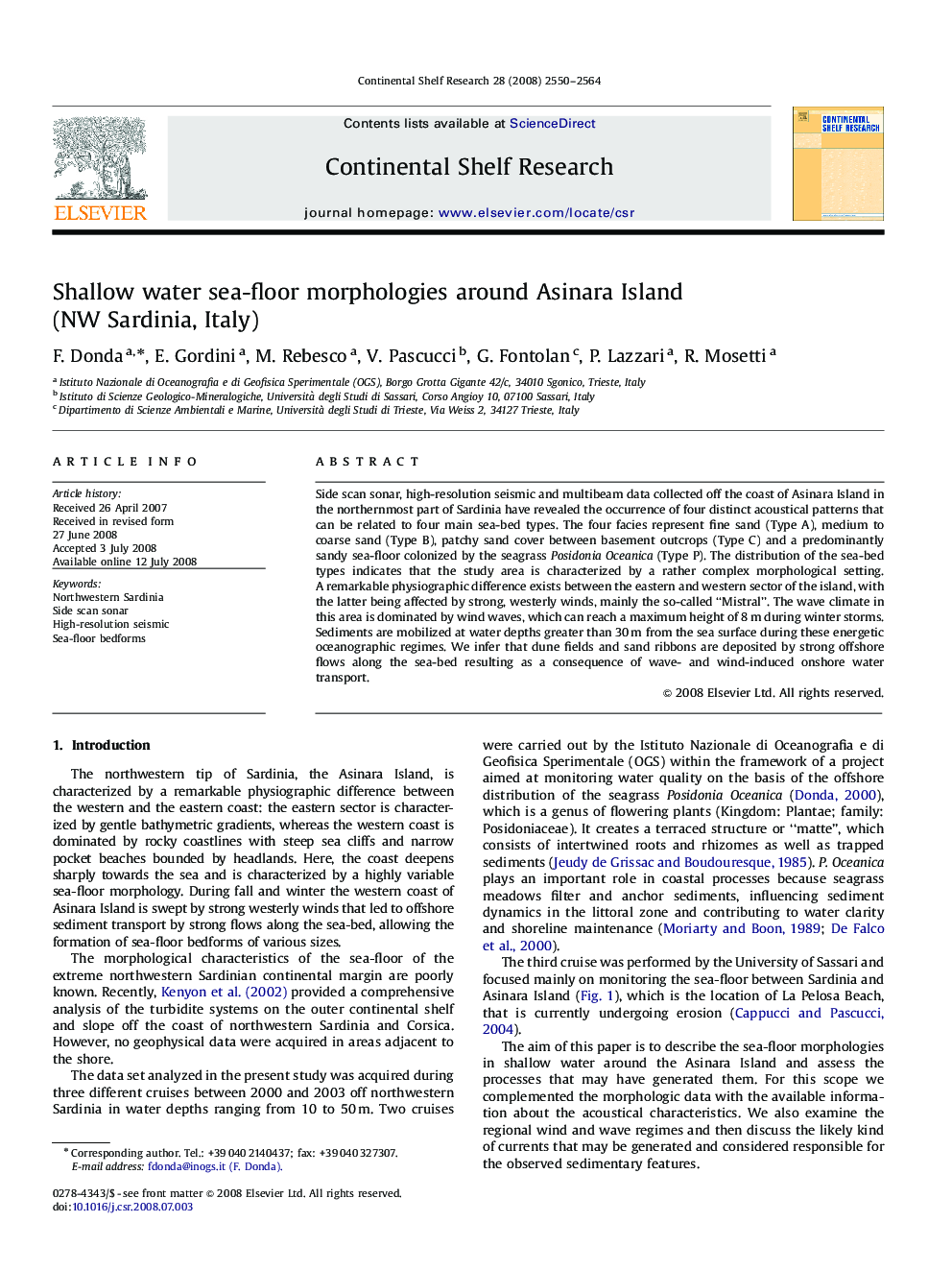| Article ID | Journal | Published Year | Pages | File Type |
|---|---|---|---|---|
| 4533409 | Continental Shelf Research | 2008 | 15 Pages |
Abstract
Side scan sonar, high-resolution seismic and multibeam data collected off the coast of Asinara Island in the northernmost part of Sardinia have revealed the occurrence of four distinct acoustical patterns that can be related to four main sea-bed types. The four facies represent fine sand (Type A), medium to coarse sand (Type B), patchy sand cover between basement outcrops (Type C) and a predominantly sandy sea-floor colonized by the seagrass Posidonia Oceanica (Type P). The distribution of the sea-bed types indicates that the study area is characterized by a rather complex morphological setting. A remarkable physiographic difference exists between the eastern and western sector of the island, with the latter being affected by strong, westerly winds, mainly the so-called “Mistral”. The wave climate in this area is dominated by wind waves, which can reach a maximum height of 8Â m during winter storms. Sediments are mobilized at water depths greater than 30Â m from the sea surface during these energetic oceanographic regimes. We infer that dune fields and sand ribbons are deposited by strong offshore flows along the sea-bed resulting as a consequence of wave- and wind-induced onshore water transport.
Related Topics
Physical Sciences and Engineering
Earth and Planetary Sciences
Geology
Authors
F. Donda, E. Gordini, M. Rebesco, V. Pascucci, G. Fontolan, P. Lazzari, R. Mosetti,
